In this lesson we’re going to look at how to use the Phrygian mode to create a metal rhythm part. We’ll look at how to play the mode on 6, 7 and 8 string guitars.
Contents for this Lesson:
Use these links to skip to a section of interest or start from the top to cover everything.
I’ve based the Audio example’s around B Phrygian played on 7 string guitar. You can base your Phrygian Metal riffs off of any root note you like. First let’s look at how to play the Phrygian Mode all over the neck:
The Notes are B, C, D, E, F#, G, A, B
B Phrygian – 6 String
You can also find a 3 notes per string diagram of the phrygian mode here.
The next diagram shows the B Phrygian mode for an 8 string tuned Low B to High A. You may have seen CJ playing a guitar tuned this way in some of our videos.
Now that you can see where all the notes of the mode are lets look at how we can use the mode to create some riffs! Here is an example of a few riffs I came up with and connected together into a simple song structure:
Obviously if you are creating a song you will want to add a melody or some vocals. You don’t want to have just riff after riff after riff etc.
There are a few different ways you can view the Phrygian mode. One is to think of it as the third mode of the Major scale. Since we’re in B Phrygian you can think of it as part of the key of G Major. Another way to think of it is as a minor scale with a flat 2.
For most of the riffs I am highlighting the flat 2 in relation to the Root note. I’m also using the 5th note in relation to the b2 to create a diminished sound. Let’s look at each riff in more detail to see what’s going on:
Phrygian Metal – Riff 1
To avoid confusion between the degrees of the mode and the fret numbers I will use Roman Numerals. I, ii, iii, IV, V, vi and vii. (Root, minor 2, minor 3, Fourth, Fifth, minor Sixth and minor Seventh).
The first Riff uses the open low B string for the palm mutes. Then we are looking at the 5th to 10th frets on the low E, A and D strings. Between the palm mutes I am playing iii to I twice. 10-7 on the E string followed by the V and ii. This is played at the 9th fret A string and 8th fret E String.
Next we move from the Root at the 7th fret E string to the vii at the 5th fret. Next we go from the iii to the ii at the 10th and 8th frets of the E string. The last part of this section is a descending arpeggio of D7. Start at the 7th fret D string (A).Then 9th fret A string (F#) and 10th fret E string (D). Finaly landing on the 8th fret E string (C) which is the ii of the mode.
Riff 1, Part 2
The next part is really a new riff. I am classing it as part of Riff 1 since it is short and simple. We continue playing palm mutes on the low B. Now adding in the ii at the 1st fret. Then then doing a little back and forth on the V and ii at the end. These are the notes F# and C. F# is an Augmented Fourth above C. This is enharmonically the same as a Diminished Fifth (Gb) so it creates a dissonant and creepy sound.
As you can see we are highlighting the notes of a Bm7 chord along with the flat 2. You could think of it as outlining a Bm7b9. We’re highlighting the note that make Phrygian different from the other minor modes, Aeolian and Dorian. We also want to make the B feel like “home” so that it feels like our key centre. Rather than the parent scale G Major.
Phrygian Metal – Riff 2
Riff 2 is pretty simple. We’re galloping on the Low B, our Root note. Additionally we’re alternating between two double stops/power chords, C Diminished and C5. I’m calling it C Diminished however, technically it is an F# not a Gb so its more like C Augmented4. If this seems confusing lets look at the notes of B Phrygian:
B – C – D – E – F# – G – A – B.
If we count up from C we get F# as the 4th note and G as the 5th.
To end this riff I just play the note C on the 1st fret B string twice with vibrato. Because of all the palm mutes we’ve set an expectation to return to the note B in the next part. This helps to make B feel like our Root note.
In the recording at the start of this leeson I repeated this riff at the end. I had the 2 C notes stop abruptly to create an unresolved ending. The listener will expect to hear a resolution to B5, Bm or Bm7.
Phrygian Metal – Riff 3
The third Riff moves back to the 7th fret E string. We’re still palm muting the open B string too. Here we are highlighting the parts of the mode which have semitone intervals or half steps. The first would be the notes B and C, I and ii. The second place we have a semitone is between F# and G or V and vi of the mode. These are played at the 9th and 10th frets of the A string.
The last part uses the iv of the mode (E) at the 7th fret A string. Then we use C again at the 8th fret E string. This takes us nicely back to the B.
Often the semitone intervals of a mode will help to bring out the sound of that mode in relation to its Root note.
Phrygian Metal – Riff 4
This part is a little different to the others. The palm mutes are now on the 7th fret Low B string which is the note F#, our V. I’m using a capital V to show it is a perfect Fifth interval. Although, keep in mind that the chord built from this degree of the phrygian mode would be a diminished chord, or m7b5.
This riff has the same timing and similar feel to riff 3. It feels like the “song” is progressing or building up. Again we’re highliting the notes of a Bm7b9 chord. However, since the F# is being palm muted it feels like we’ve gone to an F#m7b5 chord. We’re also throwing in the notes D and G.These are a b13 and a b9 in relation to the F#.
Final Thoughts
Once you know where the notes of the mode are its fairly easy to incorporate them into your riffs. See diagrams above. The important things to know are: Where is the root note. What parts of the mode distinguish it from the other modes or related Major/minor scale.
I’ve kept things pretty simple here by mostly outlining the notes of Bm7b9, just one chord. However you can write chord progressions in the Phrygian mode, or any mode, and then outline their notes in your riffs. This will help to bring out the sound of the mode. It will also malke your Riffs sound more interesting rather than always using the natural minor scale or minor pentatonic.
See what Phrygian riffs you can come up with! Remember also to try out different keys. You don’t always have to use the lowest note on the guitar as your Root. Have fun and we’ll see you next time!

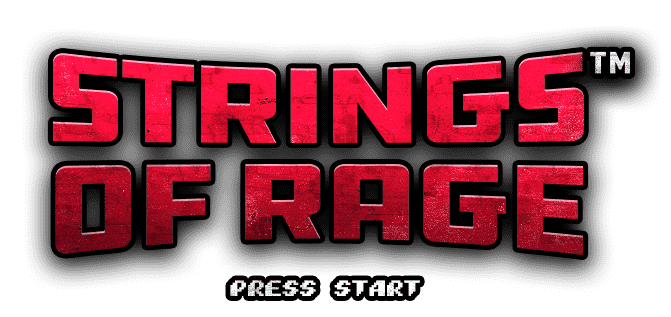
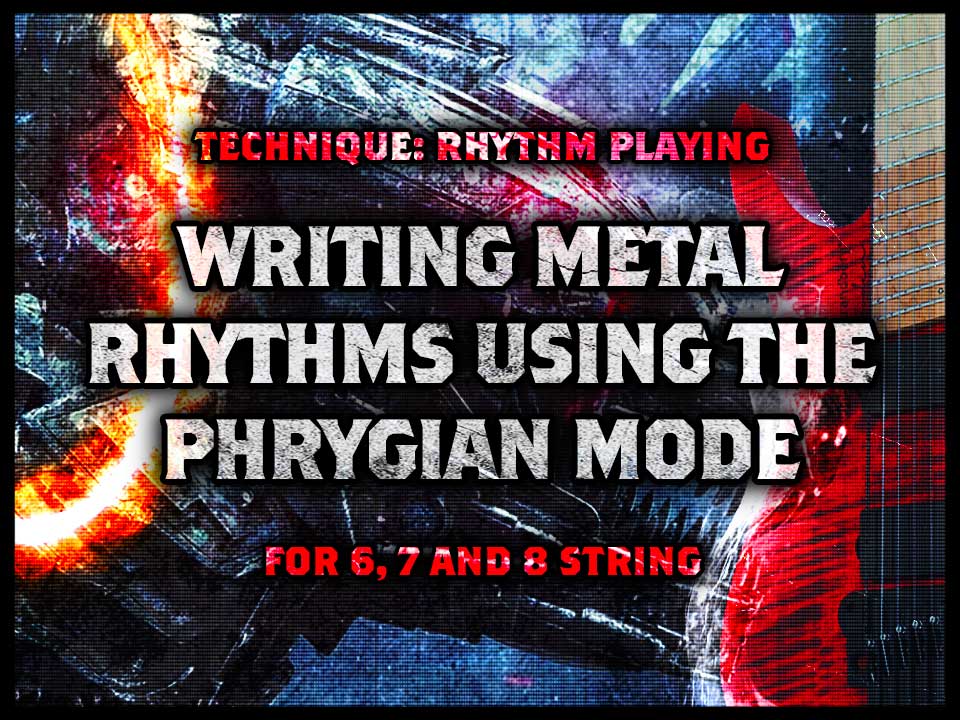
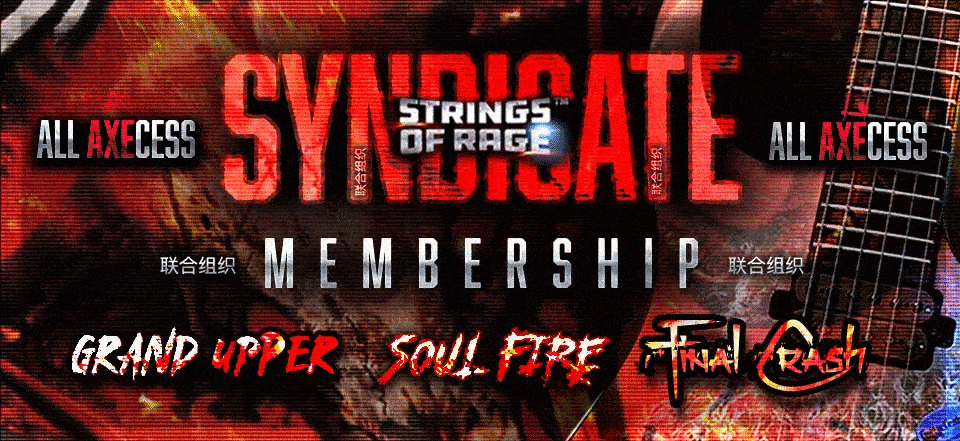
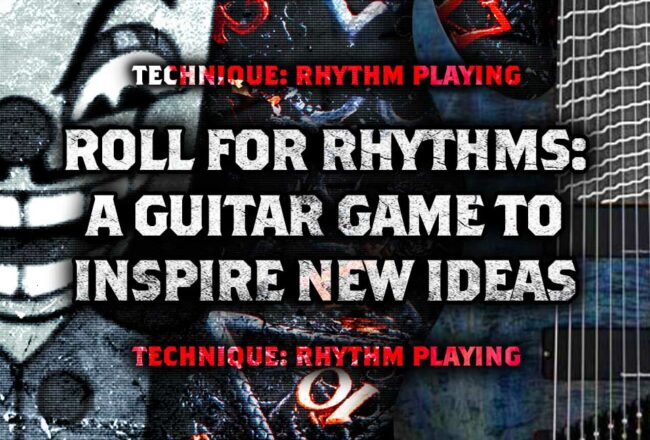
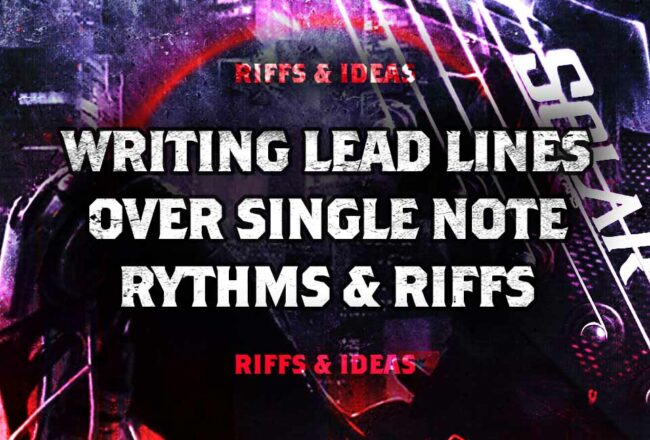







No Comment